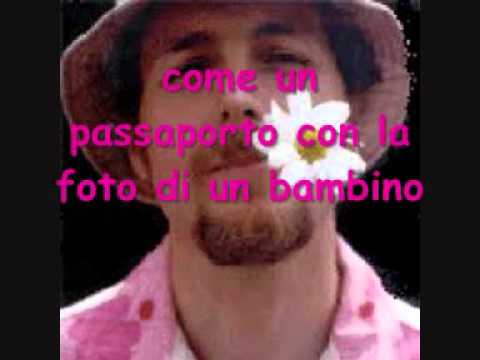1.2: Capitolo 2
- Page ID
- 170786
\( \newcommand{\vecs}[1]{\overset { \scriptstyle \rightharpoonup} {\mathbf{#1}} } \)
\( \newcommand{\vecd}[1]{\overset{-\!-\!\rightharpoonup}{\vphantom{a}\smash {#1}}} \)
\( \newcommand{\id}{\mathrm{id}}\) \( \newcommand{\Span}{\mathrm{span}}\)
( \newcommand{\kernel}{\mathrm{null}\,}\) \( \newcommand{\range}{\mathrm{range}\,}\)
\( \newcommand{\RealPart}{\mathrm{Re}}\) \( \newcommand{\ImaginaryPart}{\mathrm{Im}}\)
\( \newcommand{\Argument}{\mathrm{Arg}}\) \( \newcommand{\norm}[1]{\| #1 \|}\)
\( \newcommand{\inner}[2]{\langle #1, #2 \rangle}\)
\( \newcommand{\Span}{\mathrm{span}}\)
\( \newcommand{\id}{\mathrm{id}}\)
\( \newcommand{\Span}{\mathrm{span}}\)
\( \newcommand{\kernel}{\mathrm{null}\,}\)
\( \newcommand{\range}{\mathrm{range}\,}\)
\( \newcommand{\RealPart}{\mathrm{Re}}\)
\( \newcommand{\ImaginaryPart}{\mathrm{Im}}\)
\( \newcommand{\Argument}{\mathrm{Arg}}\)
\( \newcommand{\norm}[1]{\| #1 \|}\)
\( \newcommand{\inner}[2]{\langle #1, #2 \rangle}\)
\( \newcommand{\Span}{\mathrm{span}}\) \( \newcommand{\AA}{\unicode[.8,0]{x212B}}\)
\( \newcommand{\vectorA}[1]{\vec{#1}} % arrow\)
\( \newcommand{\vectorAt}[1]{\vec{\text{#1}}} % arrow\)
\( \newcommand{\vectorB}[1]{\overset { \scriptstyle \rightharpoonup} {\mathbf{#1}} } \)
\( \newcommand{\vectorC}[1]{\textbf{#1}} \)
\( \newcommand{\vectorD}[1]{\overrightarrow{#1}} \)
\( \newcommand{\vectorDt}[1]{\overrightarrow{\text{#1}}} \)
\( \newcommand{\vectE}[1]{\overset{-\!-\!\rightharpoonup}{\vphantom{a}\smash{\mathbf {#1}}}} \)
\( \newcommand{\vecs}[1]{\overset { \scriptstyle \rightharpoonup} {\mathbf{#1}} } \)
\( \newcommand{\vecd}[1]{\overset{-\!-\!\rightharpoonup}{\vphantom{a}\smash {#1}}} \)
\(\newcommand{\avec}{\mathbf a}\) \(\newcommand{\bvec}{\mathbf b}\) \(\newcommand{\cvec}{\mathbf c}\) \(\newcommand{\dvec}{\mathbf d}\) \(\newcommand{\dtil}{\widetilde{\mathbf d}}\) \(\newcommand{\evec}{\mathbf e}\) \(\newcommand{\fvec}{\mathbf f}\) \(\newcommand{\nvec}{\mathbf n}\) \(\newcommand{\pvec}{\mathbf p}\) \(\newcommand{\qvec}{\mathbf q}\) \(\newcommand{\svec}{\mathbf s}\) \(\newcommand{\tvec}{\mathbf t}\) \(\newcommand{\uvec}{\mathbf u}\) \(\newcommand{\vvec}{\mathbf v}\) \(\newcommand{\wvec}{\mathbf w}\) \(\newcommand{\xvec}{\mathbf x}\) \(\newcommand{\yvec}{\mathbf y}\) \(\newcommand{\zvec}{\mathbf z}\) \(\newcommand{\rvec}{\mathbf r}\) \(\newcommand{\mvec}{\mathbf m}\) \(\newcommand{\zerovec}{\mathbf 0}\) \(\newcommand{\onevec}{\mathbf 1}\) \(\newcommand{\real}{\mathbb R}\) \(\newcommand{\twovec}[2]{\left[\begin{array}{r}#1 \\ #2 \end{array}\right]}\) \(\newcommand{\ctwovec}[2]{\left[\begin{array}{c}#1 \\ #2 \end{array}\right]}\) \(\newcommand{\threevec}[3]{\left[\begin{array}{r}#1 \\ #2 \\ #3 \end{array}\right]}\) \(\newcommand{\cthreevec}[3]{\left[\begin{array}{c}#1 \\ #2 \\ #3 \end{array}\right]}\) \(\newcommand{\fourvec}[4]{\left[\begin{array}{r}#1 \\ #2 \\ #3 \\ #4 \end{array}\right]}\) \(\newcommand{\cfourvec}[4]{\left[\begin{array}{c}#1 \\ #2 \\ #3 \\ #4 \end{array}\right]}\) \(\newcommand{\fivevec}[5]{\left[\begin{array}{r}#1 \\ #2 \\ #3 \\ #4 \\ #5 \\ \end{array}\right]}\) \(\newcommand{\cfivevec}[5]{\left[\begin{array}{c}#1 \\ #2 \\ #3 \\ #4 \\ #5 \\ \end{array}\right]}\) \(\newcommand{\mattwo}[4]{\left[\begin{array}{rr}#1 \amp #2 \\ #3 \amp #4 \\ \end{array}\right]}\) \(\newcommand{\laspan}[1]{\text{Span}\{#1\}}\) \(\newcommand{\bcal}{\cal B}\) \(\newcommand{\ccal}{\cal C}\) \(\newcommand{\scal}{\cal S}\) \(\newcommand{\wcal}{\cal W}\) \(\newcommand{\ecal}{\cal E}\) \(\newcommand{\coords}[2]{\left\{#1\right\}_{#2}}\) \(\newcommand{\gray}[1]{\color{gray}{#1}}\) \(\newcommand{\lgray}[1]{\color{lightgray}{#1}}\) \(\newcommand{\rank}{\operatorname{rank}}\) \(\newcommand{\row}{\text{Row}}\) \(\newcommand{\col}{\text{Col}}\) \(\renewcommand{\row}{\text{Row}}\) \(\newcommand{\nul}{\text{Nul}}\) \(\newcommand{\var}{\text{Var}}\) \(\newcommand{\corr}{\text{corr}}\) \(\newcommand{\len}[1]{\left|#1\right|}\) \(\newcommand{\bbar}{\overline{\bvec}}\) \(\newcommand{\bhat}{\widehat{\bvec}}\) \(\newcommand{\bperp}{\bvec^\perp}\) \(\newcommand{\xhat}{\widehat{\xvec}}\) \(\newcommand{\vhat}{\widehat{\vvec}}\) \(\newcommand{\uhat}{\widehat{\uvec}}\) \(\newcommand{\what}{\widehat{\wvec}}\) \(\newcommand{\Sighat}{\widehat{\Sigma}}\) \(\newcommand{\lt}{<}\) \(\newcommand{\gt}{>}\) \(\newcommand{\amp}{&}\) \(\definecolor{fillinmathshade}{gray}{0.9}\)Descriviamo tutt*
Obiettivi per il capitolo
At the end of this chapter, students should be able to…
- talk about physical characteristics and personality traits
- ask and say someone’s nationality
- describe cities and places
- understand an Italian calendar
- express dates, common holidays, days of the week, and seasons
2.1 Introduzione al capitolo. Ascoltiamo!
While you listen to the song, watch and listen for adjectives. Which of the adjectives appear in the song? If an adjective appears, write sì (yes) and if it doesn’t, write no.
| Ex. chiara | sì |
| ridicolo | no |
| bella | |
| grande | |
| dolce | |
| caldo | |
| forte | |
| magro |
Notice there are three different endings for adjectives: -o, -a, and -e. Use your knowledge of nouns and gender to decide which ending is masculine, which is feminine and which could be either.
M __________ F __________ M/F __________
2.2 Vocabolario: gli aggettivi (Adjectives)
Come sono?

Guido è alto, bruno e forte. È italiano, di Bari.
Giosuè, Elena e Lisa sono giovani. Frequentano la stessa scuola elementare.
Anita e Sven sono alti e svedesi. Sven è biondo ma Anita ha i capelli castani.
Rita e Lino sono anziani. Rita ha i capelli bianchi e Lino ha i baffi. Gli piacciono i film gialli.
Nina ha i capelli lunghi e neri. È molto sofisticata.
Jo e Anita sono studenti. Jo è annoiato durante la lezione di biologia, ma Anita è felice.
Lisa ha i capelli rossi. È irlandese. È un po’ birichina ma è molto divertente!
Giosuè è un bambino tranquillo. Gli piacciono i videogiochi.
Martina è l’amica migliore (best friend) di Nina. Sono molto diverse, soprattutto (especially) in questo momento. Ecco perché:
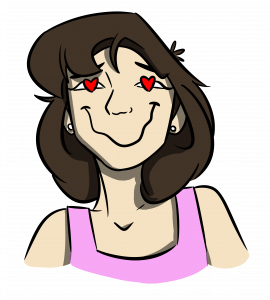 |
 |
 |
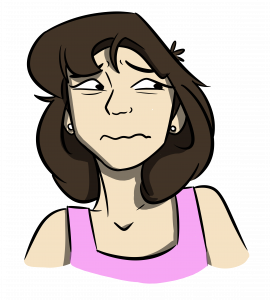 |
| Martina ha incontrato (she met) una persona speciale. È innamorata. | È molto felice. | All’improvviso sta male. È malata. | Mentre lei è malata, la sua persona speciale non telefona! Lei è nervosa. |
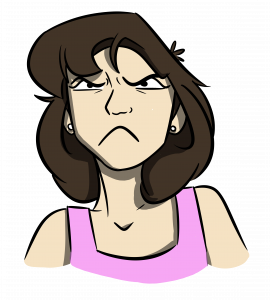 |
 |
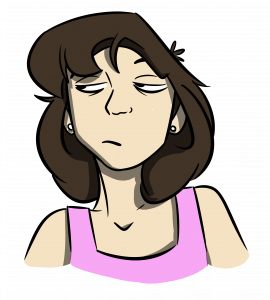 |
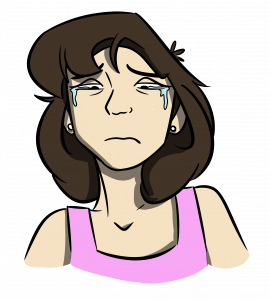 |
| Tre giorni! Niente telefonate, niente messaggi. Ora lei è arrabbiata. | Desidera una vendetta. È molto birichina! | Dopo un po’, è solo stanca e un po’ annoiata. | Ora, è triste. |
La maglia di Martina è rosa. Di che colore è la tua maglia oggi?
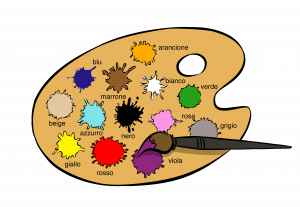
Martina è dell’Italia, quindi è italiana. E tu qual è la tua nazione? Qual è la tua nazionalità?

Esercizi
A. I contrari. For each word, write its opposite.
Ex. triste: felice
- divertente
- lento
- pigro
- vicino
- ordinato
- piccolo
- bianco
- cattivo
- bello
- stupido
B. Le nazionalità.
Parte I. Choose words from the word bank to express the nationality of people listed below. Hint: You won’t use all of the adjectives and you can use the gender and number of the adjectives to help you figure out where they go.
| cinese | giapponese | italo-americano | coreana | svizzero | tedesca | australiano | canadesi |
| egiziane | francesi | italiani | spagnola | inglesi | irlandese | marocchini | iraniano |
- Marie Kondo è nata in Giappone. È _______________________.
- Angela Merkel è nata in Germania. È _____________________.
- Mario e Luca sono nati in Italia. Sono _____________________.
- Io e Amira siamo nati in Egitto. Siamo ______________________.
- Tu e Justin Trudeau siete nati in Canada. Siete _____________.
Parte II. Use three of the adjectives that were not used above to write your own sentences following the model from Parte I. You will need to find your own subjects to fill in the first blank. You can use the internet to help you if you need ideas. Make sure to pay attention to gender and number.
Ex. Robert DeNiro è nato negli Stati Uniti, ma suo nonno paterno è nato in Italia. Lui è italo-americano.
- ____________________________ è nato/a in ____________________________. È ____________________________.
(nome) (nazione) (nazionalità)
- ____________________________ sono nati/e ____________________________. Sono ____________________________.
(nomi) (nazione) (nazionalità)
- ____________________________ è nato/a in ____________________________. È ____________________________.
(nome) (nazione) (nazionalità)
Parte III.New identities. With a partner, look at the vocabulary list for nations and nationalities and choose a new country and name. If needed, use the Internet to choose a common name from your new country. Imagine that you are at a party for study abroad students, and then create a conversation to introduce yourself to your partner that has at least 5 exchanges. You can use the phrases in the word bank below to help you structure the conversation.
Ex. Ciao! Mi chiamo Severine. Come stai?
– Mi chiamo Dera. Sto bene, e tu?
– Bene, grazie!
– Di dove sei?
– Sono francese. Sono nata a Parigi.
– Che bello! Sono etiope. Sono nata ad Addis Abeba ma abito a Milano adesso.
| Domande (?) | Risposte (!,.) |
| Come ti chiami? | Mi chiamo…. |
| Di dove sei? | Sono di… |
| Dove sei nato/a? | Sono nato/a … |
| Come stai? | Sto… |
| Dove abiti? | Abito a… |
Nota culturale
After the decline of the Roman Empire (27BC-476AD), Italy again tried to expand its borders past the confines of the Italian peninsula in the late 1800s. With the birth of the modern Italian state, Italy attempted to colonize the countries now known as Eritrea, Ethiopia, Libya, and Somalia. Italy’s modern day efforts to extend its reach into Africa lasted from (1890-1941).
Outside of Africa, Italian forces have also occupied Albania, Croatia, and the Dodecanese Islands off the coast of Greece in the first half of the twentieth century.
Vocabolario:
| Nations | Nationalities |
| l’Eritrea | eritreo/a |
| l’Etiopia | etiope |
| la Libia | libico/a |
| la Somalia | somalo/a |
| l’Albania | albanese |
Esercizi
C. La persona ideale.
Parte I. In Jovanotti’s song, “Bella,” he describes the woman he loves.
Bella come una mattina d’acqua cristallina
Come una finestra che mi illumina il cuscino
Calda come il pane
Ombra sotto un pino
Look at the adjectives listed in the vocabulary section and choose at least 10 of them to put into each category to describe the qualities you would like and wouldn’t like in either a crush, romantic partner, or best friend.
| caratteristiche positive per te | caratteristiche negative per te |
|
|
Parte II. After you have finished the activity, fill in the blanks below.
La mia persona ideale è __________________________________________________, __________________________________________________ e __________________________________________________, ma (but) non è __________________________________________________.
2.3 L’Accordo (Agreement)
As we saw from Jovanotti’s song, adjectives agree with nouns in gender, but they also have to agree in number, just like nouns. From your knowledge of nouns, can you guess the plurals for each gender?
| m.s. | f.s. | m.pl | f.pl | |
| adjectives with 4 forms like attivo | attivo | attiva | attiv__________ | attiv__________ |
| adjectives with 2 forms like intelligente | intelligente | intelligente | intelligent______ | intelligent______ |
| invariable adjectives like rosa | rosa | rosa | ros______ | ros______ |
To summarize, the following rules apply to adjectives as well as nouns:
singolare → plurale
-o → -i
-a → -e
-e → -i
Certain adjectives do not change, like beige, rosa, viola, arancione and marrone as well as borrowed adjectives like cool or playboy.
Esercizi
A. Mappe semantiche. For each noun, find two adjectives from the word bank that could be used to describe it. Hint: Pay attention to gender and number. You won’t need to use all of the words and more than one combination of answers is possible.
| alto | basso | verde | sofisticata | innamorato | sportivo | giallo | rosso |
| inglese | studiosa | birichina | lontano | simpatica | triste | felice |
la professoressa di matematica: intelligente
Michael Jordan:
Kate Middleton:
Kermit the Frog:
Il sole:
B. Come sono? Underline the adjective that best completes each sentence. Pay attention to gender and number. Make sure you can say why you chose each answer.
Ex. La mia professoressa è alta/intelligenti.
- La mia classe di italiano è divertente/piccolo.
- Il cantante Jovanotti è felice/spiritosa.
- I libri di italiano sono pesanti/interessante.
- La lavagna in Herter 201 è nera/bianco.
- L’agenda di Giovanni è rossa/verdi.
C. Chiacchieriamo! Use the work you did in exercise 2.2 C to exchange information about the ideal people you chose with a partner. Take notes on what your partner says so that you can report back to the class. Make sure to use the correct endings to reflect the gender of the person you chose.
Ex. Com’è la tua persona ideale?
[Nome] è____________.
D. Le nostre persone ideali. Parte I. Write the three adjectives your partner gave you on the board. Looking at the words written on the board, decide which adjectives are the most popular. Come sono le nostre persone ideali? With your partner, complete the sentence below with the most popular adjectives, paying attention to gender and number.
- Le nostre persone ideali sono ____________________.
Parte II. With your partner, come up with three adjectives that are missing from the board and then complete the sentence below, paying attention to gender and number.
- Le nostre persone ideali non sono ____________________.
2.4 I primi verbi: Essere e Avere (First verbs: to be and to have)
To conjugate a verb, we create the unique forms for all six subjects: io (I), tu (you, informal), lui/lei/Lei (he, she, you formal), noi (we), voi (you all), loro (they). The form of the verb that ends in -re is called the infinitive.
Il verbo essere (to be)
In the sentence from exercise C above, notice the word è which appears twice. What do you think it means? Where have you seen it before? When we want to negate a verb where do we put the word non?
| io sono | noi siamo |
| tu sei | voi siete |
| lei/lei è | loro sono |
Il verbo avere(to have)
Another verb that is commonly used when describing people is avere.
| io ho | noi abbiamo |
| tu hai | voi avete |
| lei/lui ha | loro hanno |
These first two verbs that you are learning are classified as irregular verbs because the root, or the part of the verb we add our ending to, does not remain the same in all six forms. As you can see, essere is very irregular. The first person singular and the third person plural are the same and none of the forms reflect the spelling of the infinitive. Avere, on the other hand, is almost a shoe verb.* In its conjugated forms, avere has an ‘h’ in the shoe (the singular forms and the third person plural) and the first person plural is written with ‘bb’ instead of ‘v.’ While these verbs are highly irregular, they are also very common and useful!
*Study tip
Thinking about how verbs are irregular can help us memorize them. Many irregular verbs are shoe verbs. This means that they are regular in the noi and voi forms, but irregular in the other forms. In the example of avere, the noi form is also irregular, but normally this is not the case.
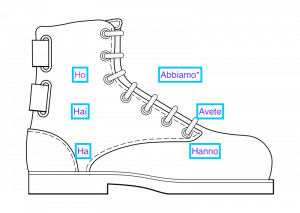
Espressioni con avere
While most descriptions have the formula subject + essere + adjective, like La classe è divertente, certain descriptions use the formula avere+noun. We need to memorize those. For a more complete list of avere expressions, see the vocabulary list at the end of the chapter.
|
|
|
|
| avere caldo | avere freddo | avere fame |
 |
 |
 |
| avere fretta | avere mal di… | avere sonno |
 |
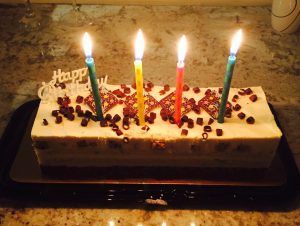 |
 |
| avere paura | avere ### anni | avere sete |
 |
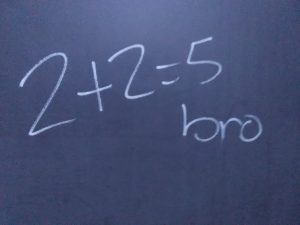 |
|
| avere ragione | avere torto |
Esercizi
A. Come sono? Use the correct form of essere to describe the people in the pictures below.


 Giovanni
Giovanni
- Luca e Giovanni ______________________________ bruni.
- Tu e Maria ______________________________ alte e bionde.
- Io e Luca ______________________________ sportivi e forti.
- Giovanni, tu ______________________________ studioso e diligente.
- Maria ______________________________ di Como e ha la carnagione chiara.
- Io ______________________________ [finish the sentence using three adjectives to describe yourself].
B. Cosa hanno? Use the correct form of avere to describe the people from the pictures above.
- Giovanni ______________________________ i capelli neri.
- Luca e Giovanni ______________________________ gli occhi castani.
- Maria, tu ______________________________ gli occhi blu.
- Io e Luca ______________________________ un cane.
- Tu e Maria ______________________________ i capelli rossi e ricci.
- Io ______________________________ [finish the sentence to describe yourself].
C. Indoviniamo! With a partner, choose a celebrity. Describe that celebrity with at least 5 sentences without using the person’s name. The class will describe who it is.
Ex. Lei ha i capelli neri e lunghi. È bella e formosa. Ha 4 bambini. Il suo partner è Kanye West.
– È Kim Kardashian.
D. Giochiamo! Let’s play charades. With a partner choose an avere expression to mime for the class. The rest of the class will guess which expression you have chosen. Hint: Don’t forget to conjugate the verbs. Continue this activity until each group has had a chance to mime an expression.
Ex. Partners: Cosa abbiamo? ☃
Studenti della classe: Avete freddo!
E. La vita di Jovanotti. Complete the paragraph below with the correct forms of avere and essere to learn about the Italian singer, Jovanotti.
Jovanotti ______________________________ un cantante italiano. Lui e sua moglie ______________________________ una figlia che si chiama Teresa. Jovanotti ______________________________ una canzone che si chiama “Per te” per Teresa. Loro ______________________________ italiani; abitano a Milano, nel nord Italia. La sua canzone, “Piove,” ______________________________ una delle canzoni del telefilm, The Sopranos. Molti americani ______________________________ fan di Jovanotti e molte volte (many times) lui ______________________________ dei concerti negli Stati Uniti.
2.5 C’è/ci sono (There is / there are)
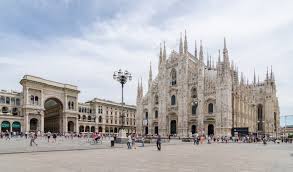
Jovanotti abita a Milano. Allora, cosa c’è a Milano? A Milano, c’è molta cultura. Il cenacolo (The Last Supper) di Leonardo Da Vinci si trova a Milano. Ci sono molti musei come Il Museo del Novecento e Il Museo del Rinascimento. Milano è al cuore del commercio (business) in Italia.
From the paragraph above, what do c’è and ci sono mean? When do we use each form?
We use c’è _____________________________________________________________.
We use ci sono _____________________________________________________________.
Esercizi
A. La Lombardia. Choose c’è or ci sono to complete the sentences below that describe La Lombardia.
- In Lombardia, c’è/ci sono dodici province.
- Ci sono/c’è due aeroporti a Milano.
- Non c’è/ci sono un vulcano in Lombardia.
- Ci sono/c’è molte* università a Milano.
- C’è/ci sono molta industria in Lombardia. È la regione più ricca d’Italia.
*Study tip
Molto can be a tricky word. When it is used as an adjective and modifies a noun, it has four forms molto/a/i/e. However when it is used as an adverb and modifies a verb or an adjective, it only has one form. Ex: Ho molti amici e sono molto simpatici.
B. Chattiamo! La mia città natale. Work with a partner to describe your hometown by using c’è or ci sono. Name at least three things that are found (or not found) in your city.
Ex. Sono di Roma. Nella mia città, c’è il Colosseo. Non c’è un vulcano. Ci sono molti monumenti.
2.6 I giorni della settimana (Days of the week)
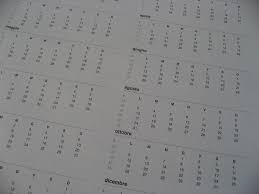
When the definite article il/la or the preposition di precedes the day of the week, it signifies that something happens repeatedly on that day of the week. For example, lunedì means Monday while il lunedì or di lunedì means Mondays.
Study tip
Interesting fact to help you memorize the days of the week: The days of the week take their names from planets and are linked to astrology.
lunedì – luna (moon), martedì – marte (Mars), mercoledì – mercurio (Mercury), giovedì – giove (Jupiter), venerdì – venere (Venus).
Nota culturale
In Italy, not only are the days of the week not capitalized, but the first day of the week is Monday!
Esercizi
La settimana di Giuseppe
| Lunedì | Martedì | Mercoledì | Giovedì | Venerdì | Sabato | Domenica |
| 10,00 lezione di italiano | 8,00 lezione di yoga | 10,00 lezione di italiano | 10,00 lezione di italiano | 8,00 spinning | 8,00 partita di baseball | |
| 11,00 lezione di biologia | 11,00 lezione di biologia | 14,00 pranzo da nonna | 15,00 caffè con Carlotta | |||
| 17,00 partita di calcio | 17,00 Zumba | 21,30 festa da Giovanni | 22,00 il concerto di Jovanotti |
A. La settimana di Giuseppe. Study Giuseppe’s agenda for the week (above) and answer the following questions.
Ex. Quando ha la lezione di italiano? Lunedì, mercoledì e venerdì.
- Quando ha la partita di baseball?
- Quando ha la festa con amici?
- Quando ha la lezione di biologia?
- Quando c’è il concerto di Jovanotti?
- Quando prende un caffè con Carlotta?
B. La mia settimana. Fill in the days of the week to make the statements below true for you.
- Ho la lezione di italiano ______________________________________________________________________.
- Non ho la lezione di italiano ______________________________________________________________________
- Oggi (today) è ______________________________________________________________________.
- Domani (tomorrow) è ______________________________________________________________________.
C. La mia agenda. With a partner, look at your agenda or calendar. Tell your partner any obligations you have that repeat each week. Do you have any in common other than la lezione di italiano?
Ex. S1: Il lunedì, il martedì e il mercoledì ho la lezione di italiano.
S2: Anch’io! (Me too!)
2.7 Le date/Le stagioni (Dates / seasons)
Torniamo a Milano per la musica!
Esercizi
A. I mesi. Click on the site above and notice the names of the months written in pink italics and rewrite them below.
|
|
|||
|
|
|||
|
|
B. Le date. Use the site above to answer the questions below. You don’t need to write full sentences at this point.
Ex. Quando c’è il concerto di Time Machine-Memo Restaurant? 6 gennaio
- Quando c’è il concerto Incognito-Blue Note?
- Quando c’è il concerto di Eros Ramazzoti – Mediolanum Forum?
- Quando c’è il concerto di Maneskin-Fabrique?
- Quando c’è il concerto di JawBreaker-Alkatraz?
- Quando c’è il concerto di Zen Breaker – Circolo Magnolia?
What do you notice about the day and the month? How is it different from how Americans express dates? _______________________________________________________________________________
There are two ways to express the date in a sentence in Italian:
- The most common way is to start with the masculine definite article (il or l’), followed by the number and then the name of the month. Di is not used in standard Italian.
Ex. il 2 gennaio, il 28 febbraio, il 14 aprile, il 9 settembre, il 22 ottobre
However, here there are two exceptions:
- for the first of the month, we write: il primo followed by the name of the month (Ex. il primo febbraio)
- for the 8th and the 11th, we use l’. For example, l’8 novembre, l’11 dicembre
2. It is also possible to start with the day of the week. In this case, the definite article is dropped.
Ex. lunedì 2 gennaio, martedì 3 febbraio, etc.
Nota culturale
When Italians express the date without words, the day comes before the month. For example, January 31st would be 31/1.
Esercizi
C. Scriviamo. Write out the dates in Italian.
Ex. 8/12 L’otto dicembre
- 3/3
- 7/1
- 9/9
- 1/1
- 11/10
D. Le date e il sillabo. Use a calendar or your knowledge of dates and the syllabus to answer the following questions using full sentences.
- Quando è il tuo compleanno?
- Quando è Quiz 2?
- Quando è la pausa per Thanksgiving?
- Quando abbiamo la prima presentazione?
- Quando è l’ultimo (last) giorno di lezione?
E. Chiacchieriamo! Work with a partner to ask and answer the questions below. If you don’t know some of the answers, use the internet to help you.
Ex. Quando è il tuo compleanno? È il 9 settembre.
- Quando è il compleanno del tuo migliore amico?
- Quando è Thanksgiving quest’anno?
- Quando è il compleanno di tua madre?
- Quando è Halloween?
- Quando è la festa della mamma?
- Quando è la festa del papà negli Stati Uniti? In Italia?
F. Le stagioni a Milano. From the description of the seasons in Milan found below, match the seasons with the months that belong to them from exercise A.
la primavera l’inverno l’autunno l’estate
Gli studenti della Bocconi, un’università privata a Milano, hanno freddo in inverno. Per Capodanno, il primo gennaio, vanno alle feste. In primavera, il sole splende di nuovo e le lezioni finiscono. Gli studenti tornano a casa. D’estate, molti studenti vanno in vacanza vicino al Mare Mediterraneo o in montagna. In autunno, i professori e gli studenti sono a lezione.
I mesi della primavera sono ______________________________, ______________________________ e ______________________________.
I mesi dell’inverno sono ______________________________, ______________________________ e ______________________________.
I mesi dell’autunno sono ______________________________, ______________________________ e ______________________________.
I mesi dell’estate sono ______________________________, ______________________________ e ______________________________.
G. Mappe semantiche. For each season, choose at least 5 other words that you associate with that season.
l’estate – il mare,
l’autunno- giallo,
l’inverno – freddo,
la primavera – verde,
H. Comprensione. Look back to the list of concerts in Milan from earlier in the section and answer the questions below.
- Quale stagione ha molti concerti?
- Quale stagione ha pochi concerti?
- Qual è il mese più popolare per concerti?
2.8 Guardiamo!
Io sono l’amore (Guadagnino 2009)
Esercizi
A. Io sono l’amore! Before you watch the clip above, read the list of things to look for in the clip so you know what to look for. How many of these things do you see in the film clip? (N.B. – Tilda Swinton, who plays the main character – Emma – is not a native speaker of Italian. She learned Italian for this role. She can be an inspiration to all Italian students!)
| Vedi queste cose? (Do you see these things?) | sì | no |
| Ex. una donna bionda e sofisticata | x | x |
| il Duomo di Milano | ||
| un bambino carino | ||
| una studentessa con i capelli rossi | ||
| una lavagna bianca | ||
| una donna alta in città | ||
| un uomo anziano | ||
| una donna che ha freddo | ||
| due ragazze innamorate |
B. Descriviamo Emma. Part I. Look at the adjectives and phrases below to decide which of them describe Emma and which do not. Highlight the words or phrases that we can use to describe Emma in this clip.
| Ex. gli occhi blu | bassa | una mamma sorpresa | abita in Messico | marocchina | ha fame | malata | felice |
| ha quaranta anni | una ragazza innamorata | stanca | ha la carnagione chiara | bruna | ricca | abita a Milano | una donna tradizionale |
C. Il mio personaggio preferito. Think of your favorite film. Who is the main character? Write at least four sentences to describe that person.
Ex. Il mio personaggio preferito è Hermione Granger. È studiosa, carina ed intelligente. Ha due amici importanti, Harry e Ron. Abita a Hogwarts Academy.
2.9 Punto culturale: il razzismo in Italia
A. The New Italians. Read the article below and respond to the comprehension questions.
- Who is Mario Balotelli and why is he angry?
- Why is the issue of racism more acute in Italy than it is in other places around the world?
- Considering Italy’s colonial history, why is a chant about monkeys and eating bananas especially disturbing?
- Why is the case of Carlo Tavecchio indicative of the serious problems with racism that exist in Italian society?
- Why is the way that Italians gain citizenship problematic from the perspective of social justice?
- What are the two terms that are used to describe the children of migrants in Italy?
- What are the examples of “imbarazzismi” the article gives?
- How is racism in Italian soccer (called football in the article) emblematic of problems in Italian society at large?
Nota culturale
Il calcio (soccer) is the most popular sport in Italy. Italians follow soccer with as much passion as many Americans follow football and/or baseball. Each year, there are 20 teams in Serie A and those teams change based on their standing the previous year. The three teams at the bottom of the standings actually get relegated, or demoted, to Serie B, a lower league! Can you imagine that happening in professional sports in the US?
Some of the major soccer clubs in Italy in Serie A (the “big leagues”) are: Juventus (Torino), A.C. Milan (Milano), Inter (Milano), Fiorentina (Firenze), A.S. Roma, and Lazio (both in Roma). While most professional sports teams in the US have mascots, Italian soccer clubs are identified by the color of their uniforms. Juventus, for example, is known as the Bianconeri because their jerseys are white and black. A.C. Milan are the Rossoneri, and Fiorentina is the Viola. The Italian national team, which represents the country at international competitions like the World Cup and the European championships, is known as the Azzurri.
B. Racism in Italy and the U.S. One of the major benefits of studying a foreign language and culture is that by learning about others we can better understand our own values and identity. Think about your experience of living in the U.S. today and answer the questions below.
- Are there any similarities between racism in Italian soccer and American football? How does racism in professional sports reflect systemic injustices? You can use the internet or a partner to help you do this research if you aren’t sure.
- Can you draw any parallels between the Balotelli generation in Italy and the Dreamers in the U.S.?
- Have you witnessed racism in your own life or your own community? In your opinion, what changes need to be enacted in the U.S. to promote anti-racist ideals?
C. Scriviamo in italiano! Describe an athlete either in the U.S. or in Italy who has fought against racial injustice. Write at least 7 sentences and pay attention to adjective agreement. You can use the internet to do research to help you and to use online dictionaries such as wordreference.com to help with vocabulary you don’t know. (See the study tip in lavender for more help with writing in a foreign language).
Ex. Serena Williams è una giocatrice famosa di tennis. Serena è una donna americana di colore. Serena ha una grande famiglia con molti fratelli (siblings). Serena nota che il colore di tennis è bianco. I vestiti per tennis (tennis clothes) sono bianchi. È un esempio di razzismo. L’esempio di Serena è importante per ragazze di colore che giocano (play) a tennis oggi.
Study tip
Even though it can be hard, it is important to try to think in Italian when you write a composition. Whenever possible, simplify your thoughts to use verb tenses and vocabulary you already know. For example, the paragraph above describing Serena Williams would be much more elegant and complex in English, but we can also express our thoughts in Italian using the present tense and vocabulary we do know. A surefire way to get frustrated is to write out your composition in English and then translate it into Italian word by word. This strategy doesn’t work well and leads students to use tools like Google Translate for an entire composition, which is an academic honesty violation and results in a grade of zero. As you can see from the example above, we did need to use some words we haven’t learned yet to describe Serena Williams. It is fine to look up individual words on wordreference.com or similar online dictionaries. When you look up words, be sure to look for the correct part of speech as the English. For example, the English word play could be a noun (as in a show in the theater) or a verb as it is above. There are two different words to express these different concepts in Italian. The noun is lo spettacolo and the verb is giocare, which needs to be conjugated. More on that in Capitolo 3!
Ripasso del capitolo
At the end of this chapter, you should be able to:
- use descriptive adjectives
- make adjectives agree with nouns in gender and number
- describe people’s physical traits and personalities
- identify the days of the week
- express dates in the proper form
- name and describe the four seasons
- conjugate the verbs essere and avere
- identify and use common avere expressions
- express the gender of common words in the singular and plural
- express the names of basic colors
- express the names of countries and nationalities
- express what is found in common physical spaces
- talk about the new Italians and racism in Italy
- make comparisons between demographic shifts in Italy and the U.S as well as racism in both countries
Prove it!
An interactive or media element has been excluded from this version of the text. You can view it online here:
http://openbooks.library.umass.edu/tutt-a-tavola-vol-1/?p=69
Il vocabolario
| italiano | English |
| Aggettivi per descrivere le persone
I colori
Le nazionalità
Altri aggettivi
Espressioni con avere
Altri sostantivi
I mesi
I giorni della settimana
Le stagioni
I verbi |
Adjectives to describe people
happy tall friendly ill bored unfriendly elderly angry active short handsome/beautiful blond naughty brunette ugly good cute/dear bad content curious weak difficult untidy fun extroverted easy happy strong generous young big fat busy in love intelligent interesting introverted slow free far thin nervous boring new orderly crazy small lazy poor rich serious nice sincere spirited tired stressed studious stupid calm sad old fast near
Colors orange sky blue beige white dark blue yellow gray brown black pink red green purple
Nationalities Albanian American Argentinian Australian Austrian Brasilian Canadian Chinese Korean Egyptian Eritrean Ethiopian French Japanese English Iranian Irish Italian Libyan Moroccan Norwegian New Zealander Portuguese Russian Scottish Somalian from the United States South African Swedish Swiss Spanish German
Other adjectives many few popular
Expressions with “to have” to be… hot/cold thirsty/hungry right/wrong in a hurry/tired ____ years old afraid to have a headache/stomachache/ sore throat blond/dark/red hair blue/brown/green eyes dark/light skin
Other nouns singer song capital city festival music person prize region
Months August April December February January June July May March October November September
Days of the week Sunday Thursday Monday Tuesday Wednesday Saturday Friday tomorrow the day after tomorrow yesterday today
Seasons autumn summer winter spring
Verbs to have there are/there is to be |
2.2 attivi, attive, rosa, rosa
2.5 singular, plural


